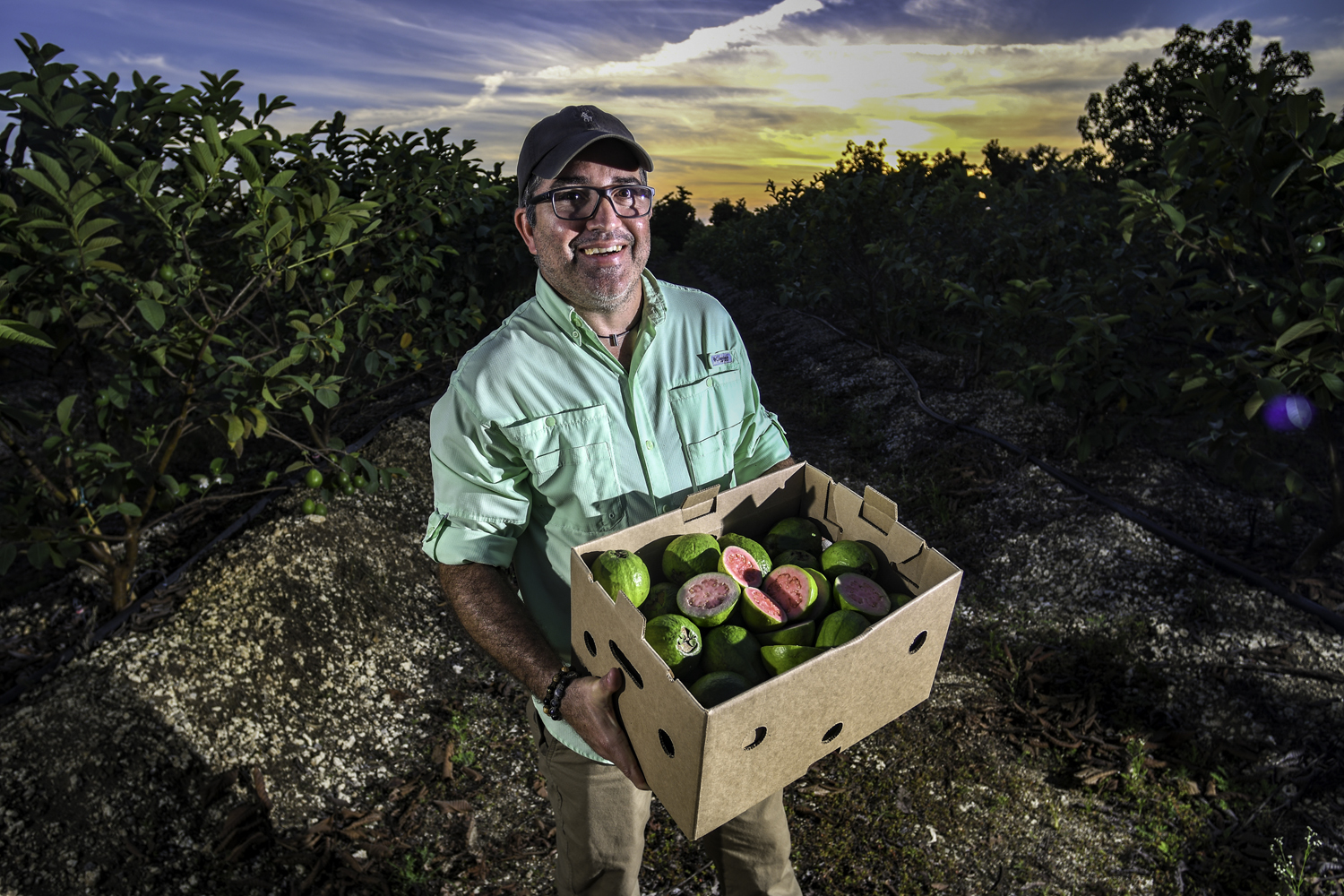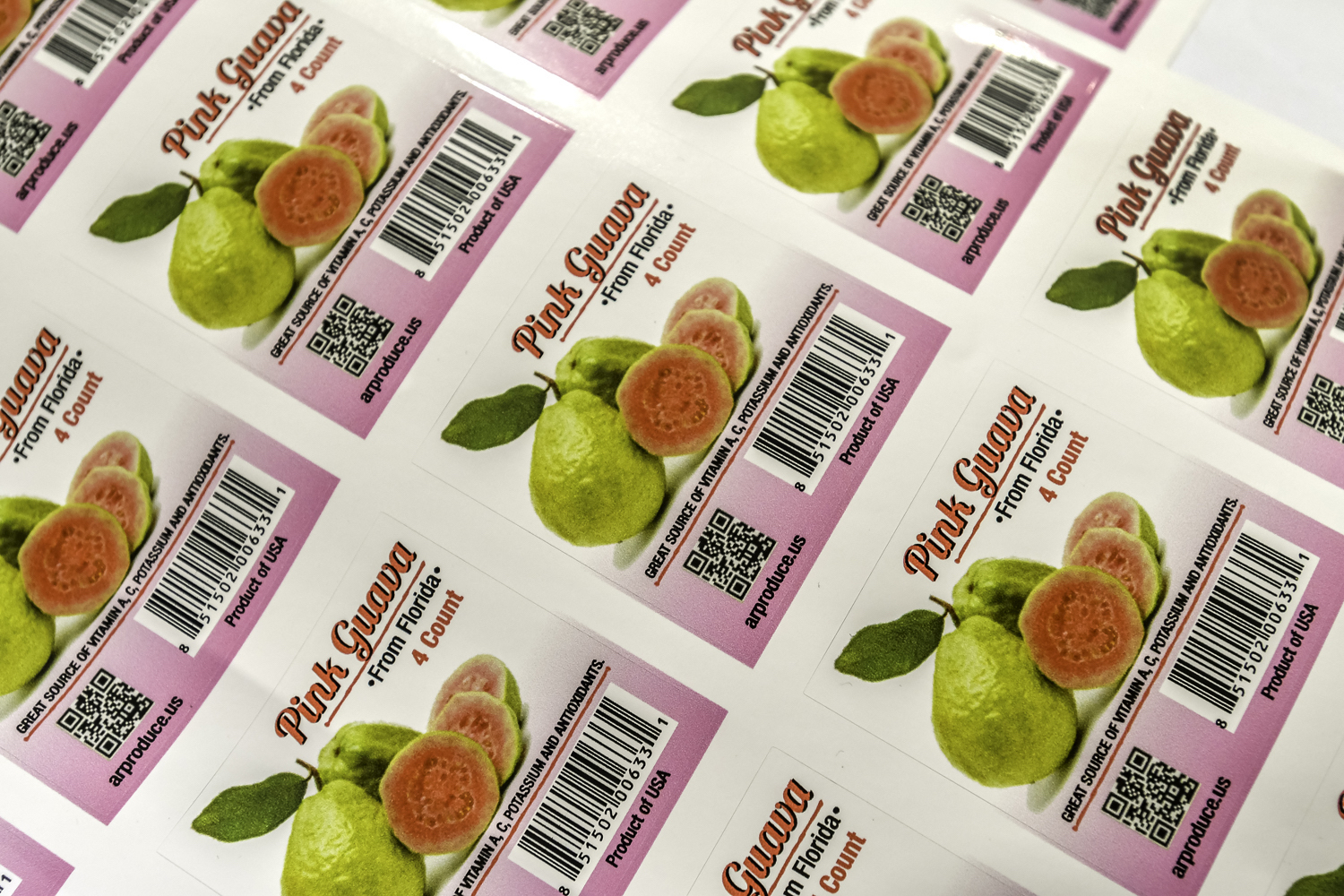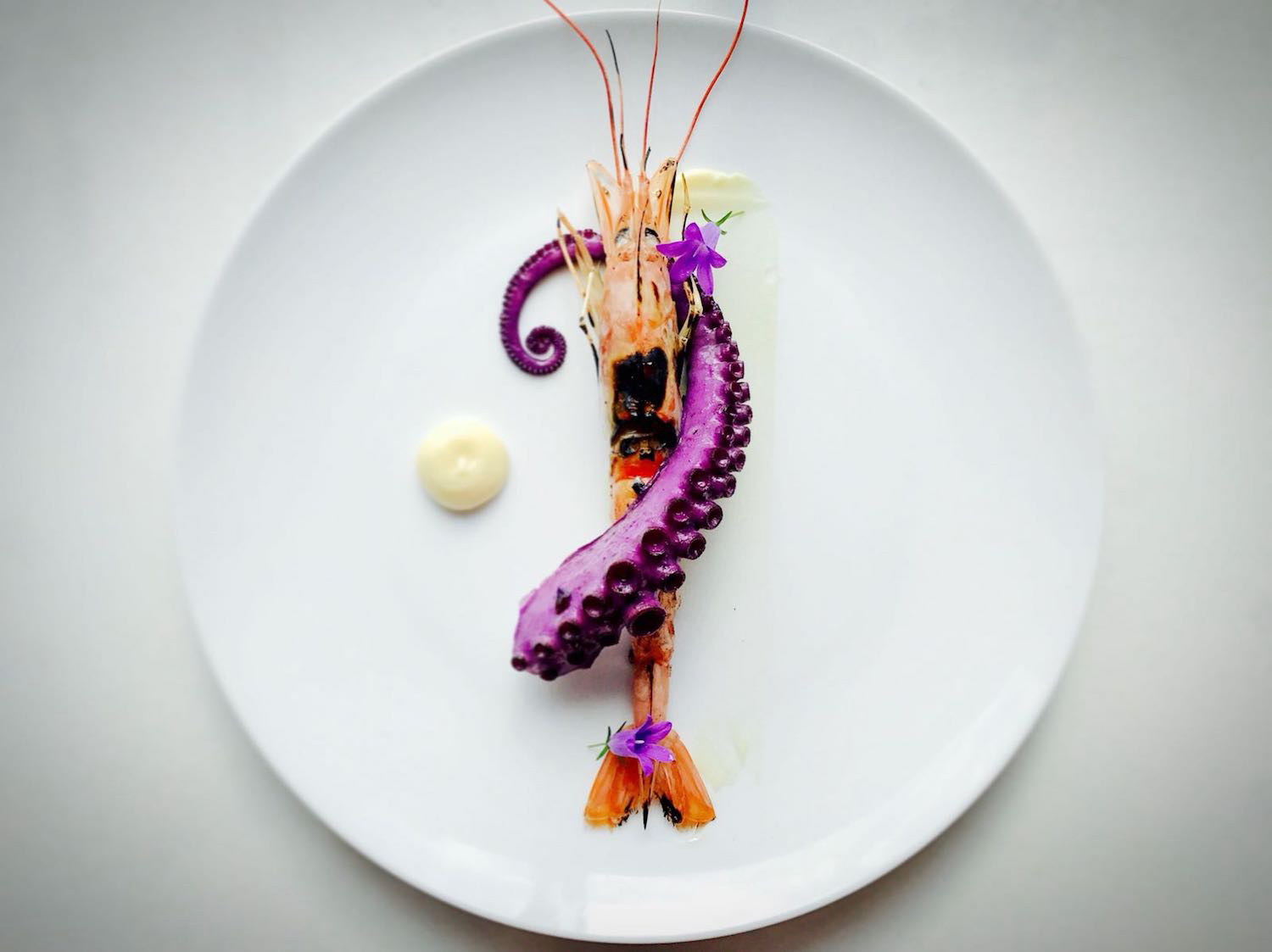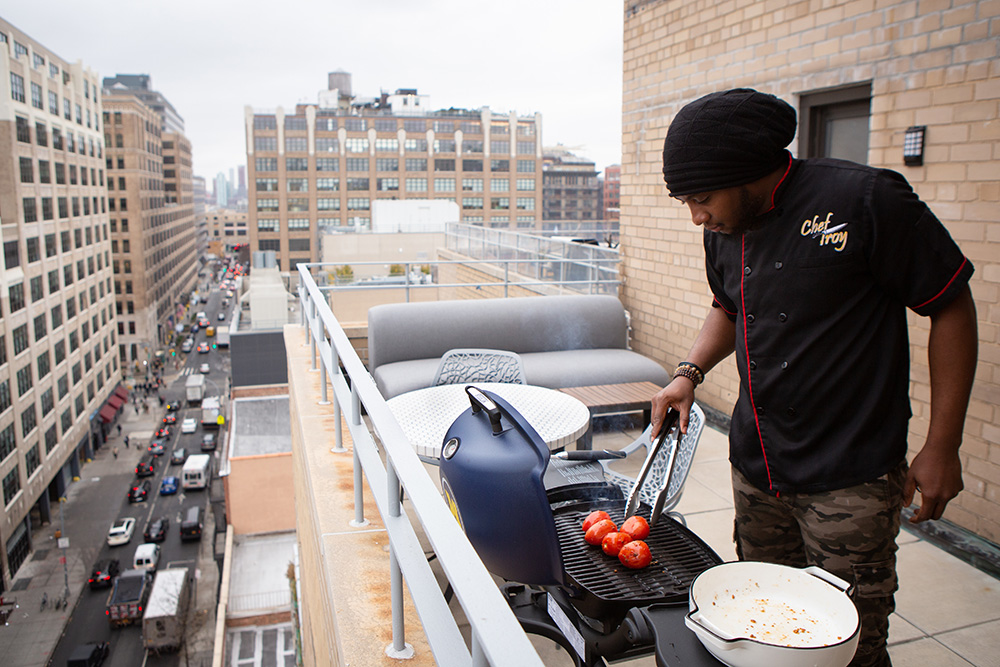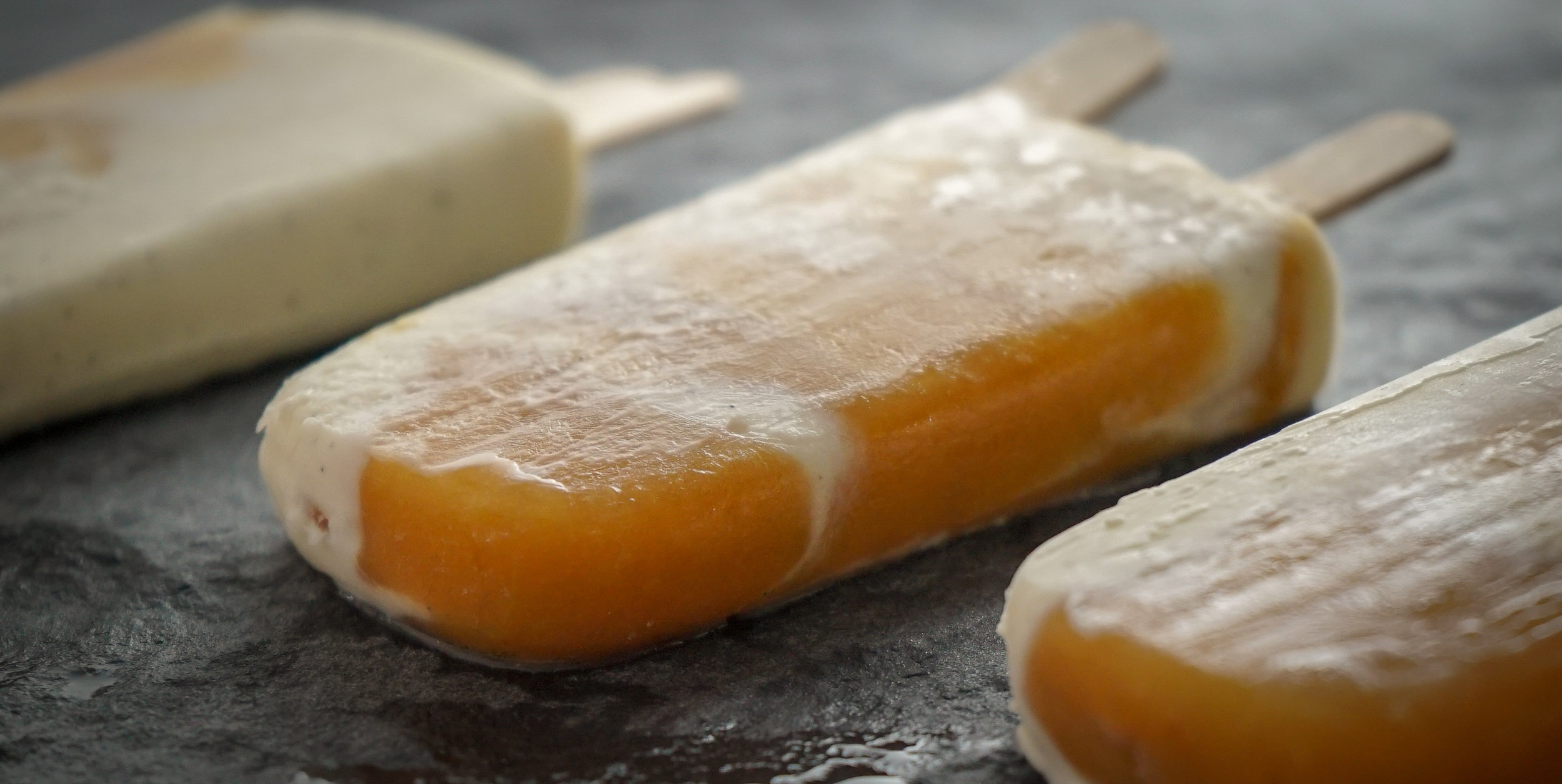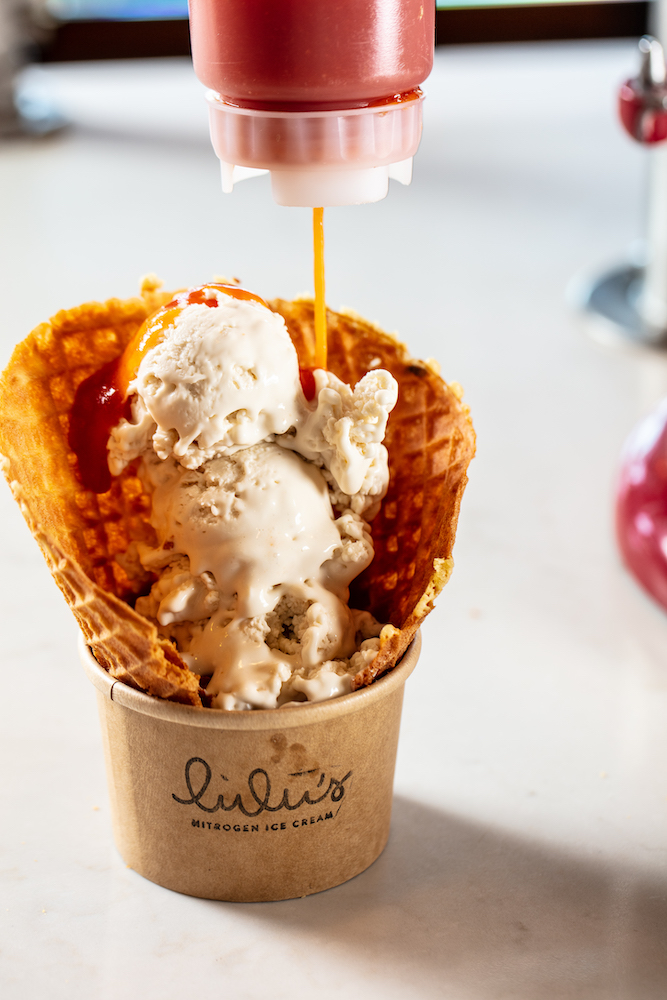Oh, Guava! My Guava!
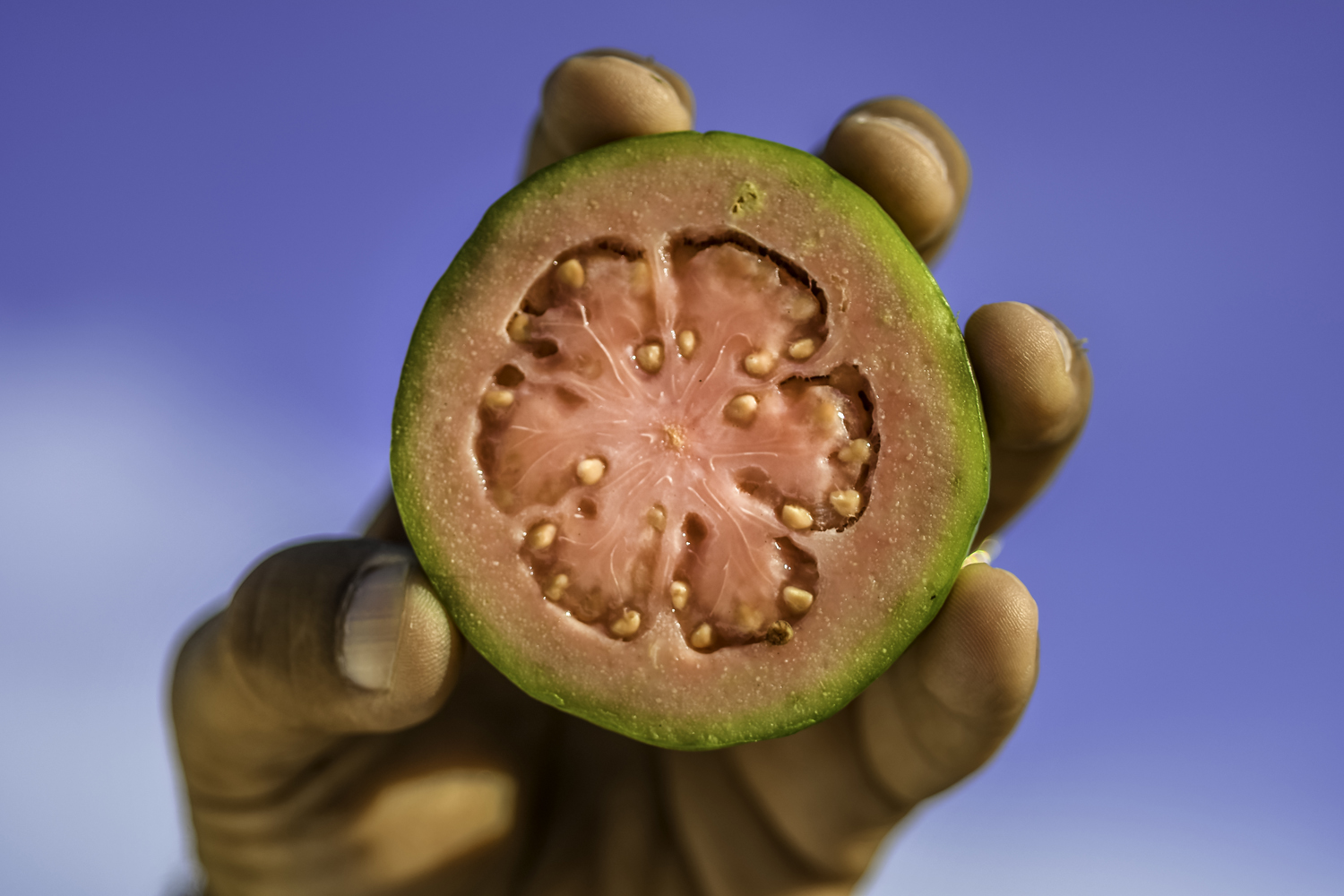
Once a staple of the Caribbean backyard, locally-grown guavas almost disappeared under pressure from commercially developed hybrids and convenient preservative-laden jams, jellies and paste. But now a grower in Florida is providing these delicate treats, and chefs are taking notice.
When local fresh guava began to disappear from farms and supermarkets, no one seemed to notice. Customers naturally began using the cans of pink paste, the preservative-rich jams and marmalades for their pastries and pork marinades. It was easier and cheaper. Life moved on.
But some people are realizing that the newer commercial guava varieties in stores aren’t the ones they grew up with, and they’re beginning to gravitate back to home-grown guavas. That’s creating a new outlook for pink guava varieties and the people who love them.
“It’s good that we’re reintroducing this in the market again,” said Frank Martinez, 43, who owns A.R. Produce in Homestead, Fla. He started his farm in 2001 with just five acres devoted to growing avocados and then added other specialty fruits. “We have seen sales spike on exotic fruits,” he said, citing millennials as part of the impetus for the fruits’ more recent growth. “There are a lot of people who are buying these products to learn and try new things.”
Round in shape, a ripe guava smells like a fruit-infused gardenia in full bloom. Its flesh is soft like papaya and pink like a glass of rosé. The fruit is native to tropical regions of the Americas and is common in backyards around the Caribbean. A type commonly found around Miami is Homestead guava, named for the area where George D. Ruehle, a scientist, crossbred the fruit in 1945.
Frank Martinez, owner of A.R. Produce, grows pink guava on 10 acres of his farm in Homestead, Fla. The fruit is native to tropical areas of the Americas, and most of the guavas that are imported into the United States come from places like Brazil, the Dominican Republic and Mexico. Mr. Martinez sees a growing demand for the type of guava he grew up eating in Cuba. PHOTOGRAPHY BY JIM RASSOL
Mr. Martinez’s relationship with guava dates to his childhood in Cuba when he climbed the tall guava trees there. Later, when he moved to Miami, he missed the sweet flavor of a fresh picked guava. His Homestead farm has now expanded to 10 acres to accommodate more guava.
Miami, in particular, has a history of cultivating guava trees commercially, but real estate development, battering by hurricanes and a Caribbean fruit fly invasion in the 1950s all put strains on the guava industry. Farmers moved to more lucrative fruits.
Robert Petrucci, who owns Fresh Gardens in Redland, an area along the southern stretches of Miami, ditched pink guava almost 10 years ago. “Pink guavas are very susceptible to insects,” he said.
International pressures also took a toll on the market. These days, Brazil, the Dominican Republic and Mexico grow the bulk of the guavas that get imported into the Unites States, according to the United States Department of Agriculture’s Economic Research Service.
Mr. Petrucci didn’t see much of a market, saying that only the establishments that catered to Hispanic audiences were interested in buying bulk amounts of guava and that those prices were not very favorable. At Sedano’s, a popular grocery store chain in Florida that is geared toward Hispanic customers, a pound of guava paste can go for as little as 89 cents.
With rising costs for land and labor, Mr. Petrucci said that pink guavas simply don’t make sense for his bottom line. Instead, he grows white guavas, which are green on the outside and crisp like an apple. He doesn’t see why anyone in Florida would want to grow pink guavas.
“Bringing that back would be the equivalent of bringing back manufacturing from China,” he said, citing the amount of labor required to keep pests from destroying the fruit. Placing nets around each fruit is one of the most popular approaches. But it’s extremely time intensive. “It’s not possible,” he said.
A.R. Produce ships guavas around the country including to Walmart stores around Florida. Mr. Martinez said that he has seen a sharp increase in demand for exotic fruits since opening his farm in 2001. He credits millennials for driving a lot of the more recent interest. | PHOTOGRAPHY BY JIM RASSOL
When the Fairchild Tropical Botanic Garden in Coral Gables, Fla., had to undergo renovations, Noris Ledesma, curator of tropical fruit, moved some of the fruit trees to the Botanic Garden’s 20-acre property in Homestead. The guavas did not make the list.
“It takes a lot of space, and it’s intensive labor,” Dr. Ledesma said. “I couldn’t afford to have the guava collection.” Even though she wasn’t harvesting the fruit for commercial use, she said the trees need to be pruned regularly and the garden’s property couldn’t support the size and maintenance.
She did donate five pink guava trees to the U.S.D.A., which has offices in Miami. She selected the varieties based on how much fruit they produced, their size, rarity and their cultural value.
“Everywhere from Mexico to Peru and Brazil and all the islands in the Caribbean, everybody has a connection with guava,” she said. “Memories of going in the tree and hanging out with your cousins and friends and eating them like donuts.”
She took a moment to reflect on her early days in Colombia when her cousins would snack on the younger fruits hoping to avoid the larvae that appeared in the more mature fruits. They’d sprinkle salt on them and squeeze on a bit of lime.
And she wonders if maybe guava became a little too common. “It’s a fruit that was taken for granted,” she said.
Dr. Ledesma has noticed a renewed interest in the fruit.
“In 20 years, guava jumped to be a commercial fruit, to being a commodity,” she said.
Some chefs are seeing the value in taking the old and making it new again.
Michael Beltran, the chef behind Ariete in Coconut Grove, Fla., believes it’s time to begin celebrating fresh guavas again. All the restaurant’s guavas are brought in from Homestead.
“When you had that kind of guava, you can never go back to the canned guava,” he said. Mr. Beltran said he is committed to bringing a new look to their culture. He shares that vision with his sous chef, Giovanni Fesser, who he credits for bringing a fresher approach to their guava and cheese pastelitos (a stuffed, croissant-like pastry).
Guavas come in many sizes and colors. However, the pink variety which is popular in Caribbean and Latin American cultures, plays a significant role in traditional foods. The fruit is incorporated into marinades for meats, into sauces for desserts and into a jam that can be enjoyed on a cracker with cheese. A ripe pink guava smells like a fruit-infused gardenia in full bloom. PHOTOGRAPHY BY JIM RASSOL
Along with guava pastries, they have a guava cocktail on the menu. And in their second restaurant, Chugs, which opened nearby in April 2019, Mr. Beltran hopes to offer a fresh guava juice dispenser, like the ones normally set aside for lemonade.
“It's a tragedy,” he said about how many Cuban-Americans he feels have settled for sub-par guava. “It's like you're a victim to the system and the system pretty much just puts cans of guava on the shelf. And for anyone they're just like, ‘okay, this is all we have.’ That's not all we have.”
Azucar, an ice cream shop in the Little Havana neighborhood of Miami, incorporates fresh fruit into all its ice cream. Their most popular flavor is the Abuela Maria, a riff on a nostalgic snack.
“If you go to your grandmother’s house, they give you guava chunk with the cream cheese and the crackers,” said Clara Sanchez, a manager at Azucar. The chunk is a brick of concentrated guava, which gets slivered off like cheese from a block.
Azucar plays with these flavors by blending vanilla ice cream, Marie biscuits, cream cheese, guava chunks and paste with a guava sauce that is made in-house from fresh, locally sourced guava.
“It brings back that vibe of when they were little kids,” she said.
Azucar also makes guava ice cream, which is creamed from fresh fruits that come in from farms in the Redland area.
For customers who are not familiar with guava, she tries her best to describe the flavor. But “there’s no way to explain the fruit, because it’s so powerful,” she said. “We let them try it.”
